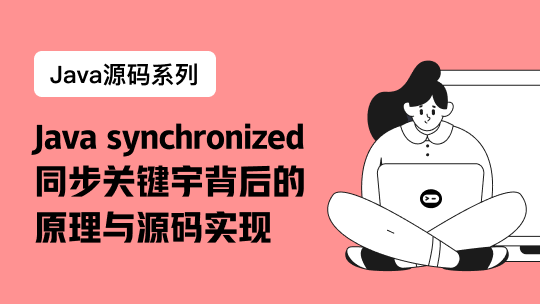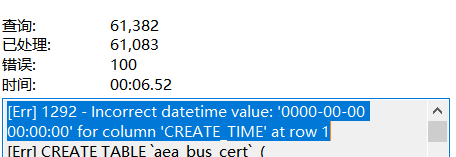Spring Boot Actuator
Spring Boot Actuator 在Spring Boot第一个版本发布的时候就有了,它为Spring Boot提供了一系列产品级的特性:监控应用程序,收集元数据,运行情况或者数据库状态等。
使用Spring Boot Actuator我们可以直接使用这些特性而不需要自己去实现,它是用HTTP或者JMX来和外界交互。
开始使用Spring Boot Actuator
要想使用Spring Boot Actuator,需要添加如下依赖:
<dependency>
<groupId>org.springframework.boot</groupId>
<artifactId>spring-boot-starter-actuator</artifactId>
</dependency>开始使用Actuator
配好上面的依赖之后,我们使用下面的主程序入口就可以使用Actuator了:
@SpringBootApplication
public class ActuatorApp {
public static void main(String[] args) {
SpringApplication.run(ActuatorApp.class, args);
}
}启动应用程序,访问http://localhost:8080/actuator:
{"_links":{"self":{"href":"http://localhost:8080/actuator","templated":false},"health":{"href":"http://localhost:8080/actuator/health","templated":false},"health-path":{"href":"http://localhost:8080/actuator/health/{*path}","templated":true},"info":{"href":"http://localhost:8080/actuator/info","templated":false}}}我们可以看到actuator默认开启了两个入口:/health和/info。
如果我们在配置文件里面这样配置,则可以开启actuator所有的入口:
management.endpoints.web.exposure.include=*重启应用程序,再次访问http://localhost:8080/actuator:
{"_links":{"self":{"href":"http://localhost:8080/actuator","templated":false},"beans":{"href":"http://localhost:8080/actuator/beans","templated":false},"caches-cache":{"href":"http://localhost:8080/actuator/caches/{cache}","templated":true},"caches":{"href":"http://localhost:8080/actuator/caches","templated":false},"health":{"href":"http://localhost:8080/actuator/health","templated":false},"health-path":{"href":"http://localhost:8080/actuator/health/{*path}","templated":true},"info":{"href":"http://localhost:8080/actuator/info","templated":false},"conditions":{"href":"http://localhost:8080/actuator/conditions","templated":false},"configprops":{"href":"http://localhost:8080/actuator/configprops","templated":false},"env":{"href":"http://localhost:8080/actuator/env","templated":false},"env-toMatch":{"href":"http://localhost:8080/actuator/env/{toMatch}","templated":true},"loggers-name":{"href":"http://localhost:8080/actuator/loggers/{name}","templated":true},"loggers":{"href":"http://localhost:8080/actuator/loggers","templated":false},"heapdump":{"href":"http://localhost:8080/actuator/heapdump","templated":false},"threaddump":{"href":"http://localhost:8080/actuator/threaddump","templated":false},"metrics":{"href":"http://localhost:8080/actuator/metrics","templated":false},"metrics-requiredMetricName":{"href":"http://localhost:8080/actuator/metrics/{requiredMetricName}","templated":true},"scheduledtasks":{"href":"http://localhost:8080/actuator/scheduledtasks","templated":false},"mappings":{"href":"http://localhost:8080/actuator/mappings","templated":false}}}我们可以看到actuator暴露的所有入口。
Health Indicators
Health入口是用来监控组件的状态的,通过上面的入口,我们可以看到Health的入口如下:
"health":{"href":"http://localhost:8080/actuator/health","templated":false},"health-path":{"href":"http://localhost:8080/actuator/health/{*path}","templated":true},有两个入口,一个是总体的health,一个是具体的health-path。
我们访问一下http://localhost:8080/actuator/health:
{"status":"UP"}上面的结果实际上是隐藏了具体的信息,我们可以通过设置
management.endpoint.health.show-details=ALWAYS来开启详情,开启之后访问如下:
{"status":"UP","components":{"db":{"status":"UP","details":{"database":"H2","result":1,"validationQuery":"SELECT 1"}},"diskSpace":{"status":"UP","details":{"total":250685575168,"free":12428898304,"threshold":10485760}},"ping":{"status":"UP"}}}其中的components就是health-path,我们可以访问具体的某一个components如http://localhost:8080/actuator/health/db:
{"status":"UP","details":{"database":"H2","result":1,"validationQuery":"SELECT 1"}}就可以看到具体某一个component的信息。
这些Health components的信息都是收集实现了HealthIndicator接口的bean来的。
我们看下怎么自定义HealthIndicator:
@Component
public class CustHealthIndicator implements HealthIndicator {
@Override
public Health health() {
int errorCode = check(); // perform some specific health check
if (errorCode != 0) {
return Health.down()
.withDetail("Error Code", errorCode).build();
}
return Health.up().build();
}
public int check() {
// Our logic to check health
return 0;
}
}再次查看http://localhost:8080/actuator/health, 我们会发现多了一个Cust的组件:
"components":{"cust":{"status":"UP"} }在Spring Boot 2.X之后,Spring添加了React的支持,我们可以添加ReactiveHealthIndicator如下:
@Component
public class DownstreamServiceHealthIndicator implements ReactiveHealthIndicator {
@Override
public Mono<Health> health() {
return checkDownstreamServiceHealth().onErrorResume(
ex -> Mono.just(new Health.Builder().down(ex).build())
);
}
private Mono<Health> checkDownstreamServiceHealth() {
// we could use WebClient to check health reactively
return Mono.just(new Health.Builder().up().build());
}
}再次查看http://localhost:8080/actuator/health,可以看到又多了一个组件:
"downstreamService":{"status":"UP"}/info 入口
info显示了App的大概信息,默认情况下是空的。我们可以这样自定义:
info.app.name=Spring Sample Application
info.app.description=This is my first spring boot application
info.app.version=1.0.0查看:http://localhost:8080/actuator/info
{"app":{"name":"Spring Sample Application","description":"This is my first spring boot application","version":"1.0.0"}}/metrics入口
/metrics提供了JVM和操作系统的一些信息,我们看下metrics的目录,访问:http://localhost:8080/actuator/metrics:
{"names":["jvm.memory.max","jvm.threads.states","jdbc.connections.active","process.files.max","jvm.gc.memory.promoted","system.load.average.1m","jvm.memory.used","jvm.gc.max.data.size","jdbc.connections.max","jdbc.connections.min","jvm.gc.pause","jvm.memory.committed","system.cpu.count","logback.events","http.server.requests","jvm.buffer.memory.used","tomcat.sessions.created","jvm.threads.daemon","system.cpu.usage","jvm.gc.memory.allocated","hikaricp.connections.idle","hikaricp.connections.pending","jdbc.connections.idle","tomcat.sessions.expired","hikaricp.connections","jvm.threads.live","jvm.threads.peak","hikaricp.connections.active","hikaricp.connections.creation","process.uptime","tomcat.sessions.rejected","process.cpu.usage","jvm.classes.loaded","hikaricp.connections.max","hikaricp.connections.min","jvm.classes.unloaded","tomcat.sessions.active.current","tomcat.sessions.alive.max","jvm.gc.live.data.size","hikaricp.connections.usage","hikaricp.connections.timeout","process.files.open","jvm.buffer.count","jvm.buffer.total.capacity","tomcat.sessions.active.max","hikaricp.connections.acquire","process.start.time"]}访问其中具体的某一个组件如下http://localhost:8080/actuator/metrics/jvm.memory.max:
{"name":"jvm.memory.max","description":"The maximum amount of memory in bytes that can be used for memory management","baseUnit":"bytes","measurements":[{"statistic":"VALUE","value":3.456106495E9}],"availableTags":[{"tag":"area","values":["heap","nonheap"]},{"tag":"id","values":["Compressed Class Space","PS Survivor Space","PS Old Gen","Metaspace","PS Eden Space","Code Cache"]}]}Spring Boot 2.X 的metrics是通过Micrometer来实现的,Spring Boot会自动注册MeterRegistry。 有关Micrometer和Spring Boot的结合使用我们会在后面的文章中详细讲解。
自定义Endpoint
Spring Boot的Endpoint也是可以自定义的:
@Component
@Endpoint(id = "features")
public class FeaturesEndpoint {
private Map<String, String> features = new ConcurrentHashMap<>();
@ReadOperation
public Map<String, String> features() {
return features;
}
@ReadOperation
public String feature(@Selector String name) {
return features.get(name);
}
@WriteOperation
public void configureFeature(@Selector String name, String value) {
features.put(name, value);
}
@DeleteOperation
public void deleteFeature(@Selector String name) {
features.remove(name);
}
}访问http://localhost:8080/actuator/, 我们会发现多了一个入口: http://localhost:8080/actuator/features/ 。
上面的代码中@ReadOperation对应的是GET, @WriteOperation对应的是PUT,@DeleteOperation对应的是DELETE。
@Selector后面对应的是路径参数, 比如我们可以这样调用configureFeature方法:
POST /actuator/features/abc HTTP/1.1
Host: localhost:8080
Content-Type: application/json
User-Agent: PostmanRuntime/7.18.0
Accept: */*
Cache-Control: no-cache
Postman-Token: dbb46150-9652-4a4a-95cb-3a68c9aa8544,8a033af4-c199-4232-953b-d22dad78c804
Host: localhost:8080
Accept-Encoding: gzip, deflate
Content-Length: 15
Connection: keep-alive
cache-control: no-cache
{"value":true}注意,这里的请求BODY是以JSON形式提供的:
{"value":true}请求URL:/actuator/features/abc 中的abc就是@Selector 中的 name。
我们再看一下GET请求:
http://localhost:8080/actuator/features/
{"abc":"true"}这个就是我们之前PUT进去的值。
扩展现有的Endpoints
我们可以使用@EndpointExtension (@EndpointWebExtension或者@EndpointJmxExtension)来实现对现有EndPoint的扩展:
@Component
@EndpointWebExtension(endpoint = InfoEndpoint.class)
public class InfoWebEndpointExtension {
private InfoEndpoint delegate;
// standard constructor
@ReadOperation
public WebEndpointResponse<Map> info() {
Map<String, Object> info = this.delegate.info();
Integer status = getStatus(info);
return new WebEndpointResponse<>(info, status);
}
private Integer getStatus(Map<String, Object> info) {
// return 5xx if this is a snapshot
return 200;
}
}上面的例子扩展了InfoEndpoint。
本文所提到的例子可以参考:https://github.com/ddean2009/learn-springboot2/tree/master/springboot-actuator
更多教程请参考 flydean的博客













